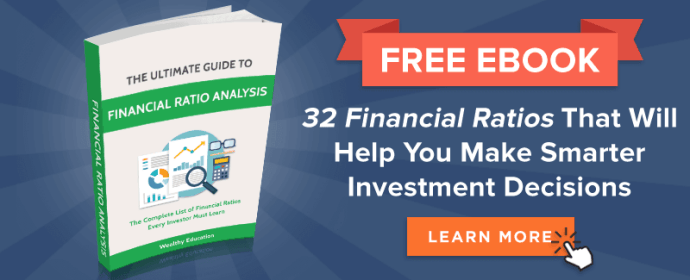This is an in-depth guide on how to calculate Cash Flow Return on Investment Ratio (CFROI) with detailed interpretation, analysis, and example. You will learn how to use this ratio formula to assess a business profitability.
Definition - What is Cash Flow Return on Investment Ratio?
The cash flow return on investment (CFROI) is a metric that analyzes a company’s cash flow in relation to its capital employed.
This ratio is used by investors who believe that cash flow is the underlying driver of value in a company, as opposed to earnings or sales.
It is most informative when its compared to WAAC, because it allows investors to see the discrepancy between the amount a company paid to raise funds and the amount of return a company receives from those funds.
More...
Formula
The equation for CFROI ratio is as follows:

Cash Flow Return on Investment = Operating Cash Flow / Capital Employed
As you can see, to compute this ratio, you merely take a company’s cash flow, which can be found on its statement of cash flow, and divide it by its capital employed.
Capital employed is a company’s total assets subtracted by its current liabilities, both of which can be found on the company’s balance sheet.
This equation looks at what percentage of employed capital the company generates in cash each year.
Example
To highlight the pros and cons of using the cash flow return on investment, we will provide an example.
Suppose Company EEE and Company FFF are both transportation companies in the USA.
Company EEE generated $100 million of cash flow last year, and has $1 billion of employed capital.
Company FFF produced $150 million of cash flow this year, and has $750 million in employed capital.
Last Year | This Year | |
|---|---|---|
Operating Cash Flow | $100M | $150M |
Capital Employed | $1,000M | $750M |
CFROI Ratio | 10.00% | 20.00% |
Plugging each company’s respective financials into the equation above, we see that Company EEE and Company FFF have CFROIs of 10% and 20%, respectively.
Interpretation & Analysis
In the example above, Company FFF is more effectively generating cash from its capital active in the business operations.
In other words, Company FFF is turning 20% of its capital employed into cash, and Company EEE is only turning 10% into cash.
For investors who put the emphasis of companies’ values on cash flow, as opposed to earnings, CFROI is a vital ratio.
And these investors are not wrong. Many people agree that cash flow should be driver of value because earnings can be manipulated with dubious accounting tactics.
However, the same can’t be true of cash flow. Therefore, many investors prefer CFROI to EPS or any other metric with earnings as the driver of value (e.g. PE ratio).
Cautions & Further Explanation
The operating cash flow return on investment can give investors the wrong impression of a stock if CFROI is not compared to the company’s weighted average cost of capital (WAAC).
A company’s CFROI less WAAC is a company’s net CFROI, and this is the metric that is more important for investors.
It is the percentage earned on capital minus the cost of raising capital.
For example, in the scenario below suppose that Company EEE has a WAAC of 4%, and Company FFF has a WAAC of 15%.
If we subtract each company’s WAAC from their cash flow return on investment, Company EEE and Company FFF would have net CFROIs of 6% and 5%, respectively.
Now the investments look similar in value. So when calculating this ratio, it is imperative to also look at net CFROI which give investors a better picture of a company’s business operations.


